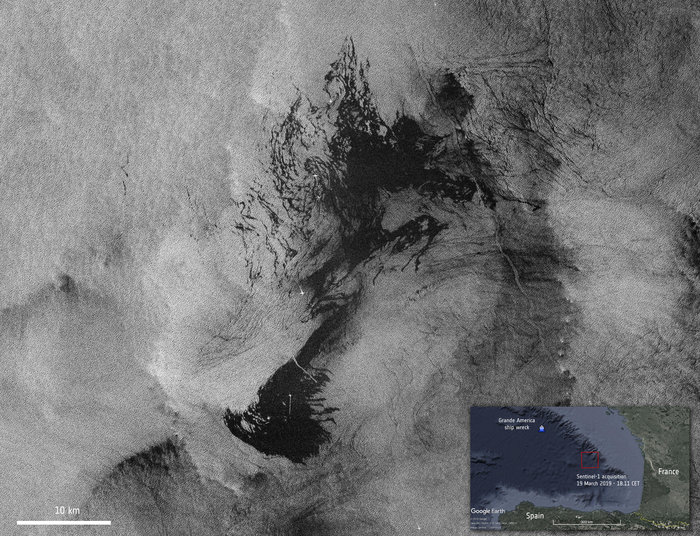The favourable weather conditions enable those conducting pollution cleaning operations off the coast of France, where the ill-fated Grande America sank a week ago. In the meantime, the Atlantic Maritime Prefecture published an inventory of the ship’s cargo according to which, Grande America was transporting 1.050 tonnes of dangerous goods.
Specifically, as Le Monde reports, the list with the dangerous goods was discussed during a meeting in Brest, amongst five environmental associations with Premar Atlantique, prior to being published.
The day the vessel sank, Premar Atlantique had prepared a list of dangerous goods consisting of 365 containers, 45 listed as containing hazardous materials.
In addition, according to the list the vessel contained
- 62 tons of resin,
- 16 tons of turpentine substitute (White Spirit),
- 720 tonnes of hydrochloric acid,
- 25 tons of fungicides,
- 9 tons of aerosol.
Among the substances considered as not dangerous: 5 containers of lubricants, 2 tons of tires, 18 tons of fertilizer or 24 containers of steel.
In the meantime, it was reported that Grande America was also transporting 2.100 vehicles, as 190 trucks, 22 buses or 64 construction machines. Later on, it was found out that along with the vessel sinking, four Porsche 911 GT2 RS sports cars ended up at the bottom of the sea.
Concerning fuels, in addition to 2.200 tonnes of HFO, the vessel was also transmitting 190 tonnes of marine diesel and 70.000 litters of oil.
In the meantime, Premar Atlantique posted on twitter that in the water hydrocarbon emulsifies, splits and disperses over currents, wind and swell. It is fundamental to act offshore. As a result, during the cleaning operations 1 tonne of pollution recovered at sea, is 10 tonnes less waste on the beach.
Generally, the Grande America vessel was caught on fire on March 10. Yet the reasons remain unknown up to now. Due to the fire, the vessel eventually sank which resulted to pollution, as according to Premar Atlantique an oil slick was detected at the area that the vessel sank.
Some days after the first oil slick detection, the French Authorities announced a third oil slick found at the area. However, because of the difficult weather conditions, the the French and Spain navy were unable to continues the pollution cleaning operations.
In light of the possibility of oil pollution, the authorities announced that the oil spill will not reach the coast, yet, warned that debris and containers could arrive in the coastline quicker.

Credit: ESA






























































